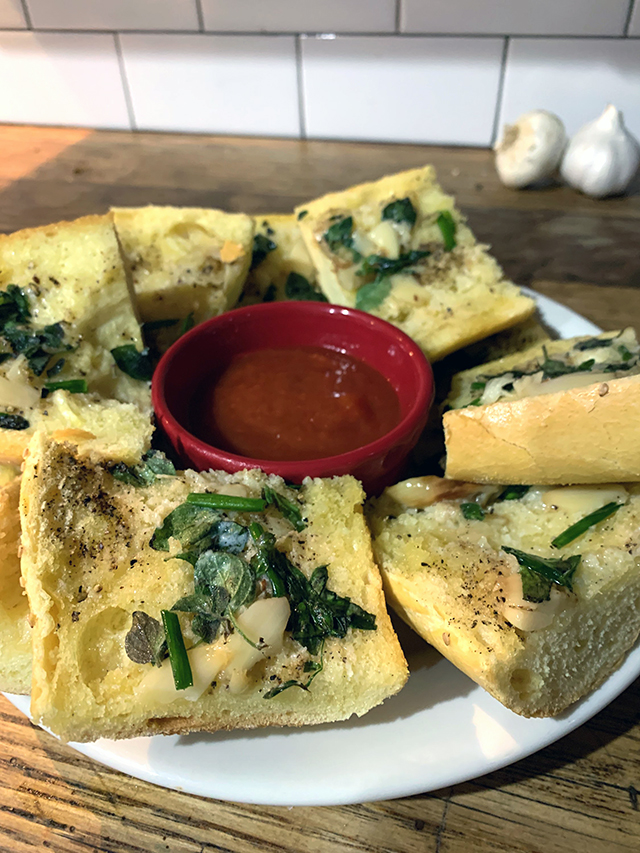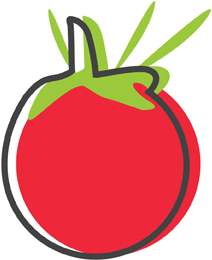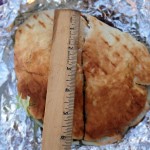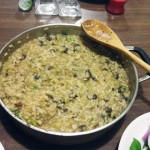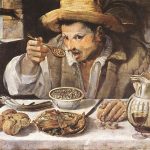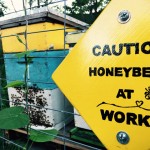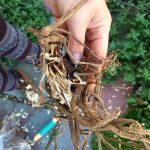by Paula D.
on January 15, 2022 9:56 am in Cats

Well, it finally happened. I got Covid. I’ve been very careful since the holidays in particular. I haven’t been out much at all but Omicron is so contagious. You can get it at the bodega or the supermarket. You can get Covid anywhere, even if you’re taking all measures of precaution, including being fully vaxed and getting your booster.
The first two days were pretty bad honestly. I was in bed with a fever, chills, and the sweats. To put it in perspective, I’d wake up in the middle of the night and my sheets were soaked. I also had a constant headache, no appetite and I was exhausted. The next ten days I improved but the tiredness continued and was legit. I’d sit on the couch for a minute and wake up an hour and a half later. I discovered what narcolepsy is like.
I “celebrated” my 41st birthday during this quarantine period and I was gifted two cat puzzles. I can’t remember the last time I worked on a puzzle, probably when I was a kid. I never thought I’d enjoy it, but I did. In fact, I freaking love puzzles.
My first 500 piece puzzle only took me three nights to complete. There were a few scares. My cats were very interested in this new thing to sleep on. Besides napping on the puzzle, they’d sit on it when I was trying to assemble it. A few times, pieces were knocked to the ground by an excited tail wagging. I feared I’d end up with one missing piece. But that didn’t happen, phew!
One has a lot of time to think while working on a puzzle. I wondered…what are the origins of the puzzle?
The history is as follows:
The first jigsaw puzzle was created by a map engraver named John Spilsbury, in 1762. He mounted one of his master maps onto wood and then cut around the countries. He gave it to children in the local school to help them with their geography education. And in that act jigsaw puzzles were invented. It was an instant hit and the concept was soon copied by others and expanded into other educational images other than just maps, such as farms and religious scenes. At this time all jigsaw puzzles were created from wood, but also at this time they weren’t called jigsaw puzzles, they were called dissected puzzles. The term jigsaw comes from the special saw called a jigsaw that was used to cut the puzzles, but not until the saw was invented in the 1880’s*.
I’m very much into maps and wood. Can someone make a puzzle map of the Rockaway peninsula constructed from the old boardwalk wood?!
In further reading, I learned it wasn’t until the great depression that puzzles gained mass popularity. As it was a creative distraction and cheap passtime. And so now, It makes sense that a worldwide pandemic has sparked the resurgence of jigsaw puzzles. Depressed? Get a puzzle. I can vouch for its therapeutic effectiveness.
My next puzzle is 1,000 pieces and the design is more challenging than the last. The image is of a cat surrounded by a bed of small flowers and a sea of green and blue plants. At least I have a picture to follow. Before 1930, puzzles did not have an image reference guide. If you found a completed puzzle of the same kind, it would be considered cheating to use it.
Watch my puzzle progress on Instagram – @theglorifiedtomato
*Source
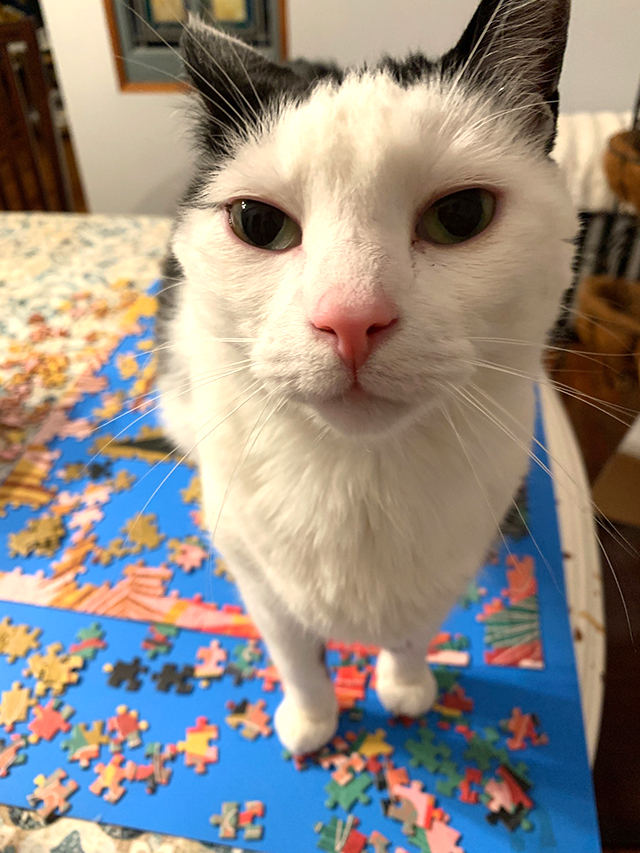
by Paula D.
on January 10, 2022 1:22 pm in Recipes
My 10-year-old goddaughter for Christmas gifted me red serving baskets with adorable checkered liners. She knows red is my color and the theme of my kitchen decor. She’s so thoughtful! The baskets are the ones you’d see at a drive-in movie or old-school diner. I wanted to make food fitting for their use. Hamburgers, hotdogs, or French fries would work well. I went with my favorite out of the three, French fries.

I realized after looking up a few recipes that I’ve never made fries correctly. I learned you’re supposed to soak the potatoes to remove the starch and fry them twice. Once at a low temperature and then again on high heat. This technique is how you get that professional crispness. It didn’t take much more time and the outcome was worth the effort. Give this one a try!
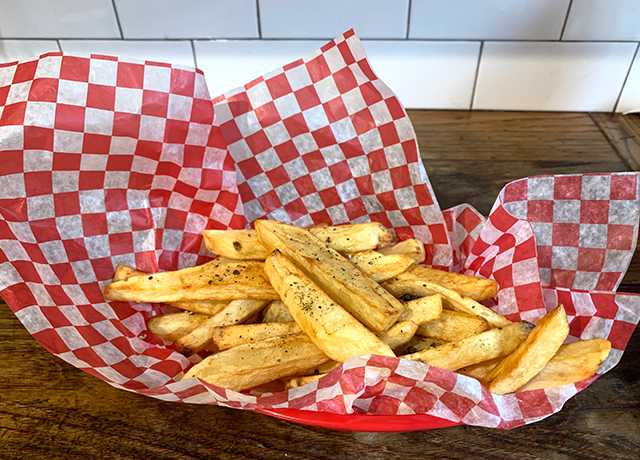
Homemade French Fries
(1 large serving)
Ingredients:
5 large russet potatoes
Vegetable oil
Sea salt
Fresh ground pepper
Directions:
- Peel and rinse the potatoes. Cut them into sticks by slicing the potato in 4 or 5 vertical pieces, and then cutting each piece into sticks.
- Place them in a bowl and cover with cold water. Allow them to soak, for at least one hour or as long as overnight. The longer you soak, to remove the starch the crispier they will be.
- Drain off the water and lay the potatoes on paper towels. Pat dry.
- Heat a few inches of oil in a pot to 300 degrees F. Cook the potatoes until soft, 4 to 5 minutes per batch. They should not be brown at this point. Remove each batch and drain on dry paper towels.
- Once all the potatoes have been fried at 300 degrees F, turn up the heat until the oil reaches 400 degrees F. When the oil is hot, start frying the potatoes in batches again, cooking until the fries are golden and crisp. Remove the potatoes from the oil and drain on paper towels.
- Sprinkle it with sea salt and fresh pepper.
I came across an interesting fact about potatoes. Both yukon and sweet potatoes are root vegetables but they’re distantly related. Sweet potatoes are from the morning glory family. Yes, the flowers you see growing all over Rockaway through fences and just about everywhere else. Yukon potatoes are part of the nightshade group, which includes many familiar vegetables like tomatoes, peppers and eggplant. If you’ve ever grown both, you’ll notice how different the flowers are, this is an indicator of their distant relation.
Follow mefor the day-to-day on Instagram: @theglorifiedtomato
by Paula D.
on December 30, 2021 10:06 am in Recipes
I worked at Marzullo’s Bakery on Long Island when I was 16 years old. Marzullo was one of those tough Italian types. I felt intimidated by him at that young age. But I respected him and learned a lot from Tony.
He was an incredible cook and baker. Sometimes he’d make us lunch in the back kitchen. I’ll never forget this linguine with clam sauce. It was absolutely, perfectly delicious. Other times Tony insisted that I test out foods and pastries he was experimenting with. You just didn’t say no to him. This kind of employer / employee relationship probably would not be accepted in today’s world!
Besides picking up cooking techniques from him, Marzullo taught me a lot about cleaning. Afterall, it was one of my main job responsibilities. And Italians like everything spotless. I have one memory in particular about cleaning that is very vivid. I had just started working there. I was mopping the floor before closing. Tony came from behind the counter with his arms flailing in the air screaming, “Gagootz, Gagootz!!!” There was a glaze of muddy water all over the floor and I couldn’t get it up. He grabbed the mop from me. I had never used one of those yellow mop buckets where it has that squeegee mechanism. With a scowl, he aggressively started mopping, showing me the correct way, while intermittently yelling things in Italian. I learned fast that day.
Gagootz, if you’re wondering, is Italian slang for “crazy in the head” or “squash for brains.”
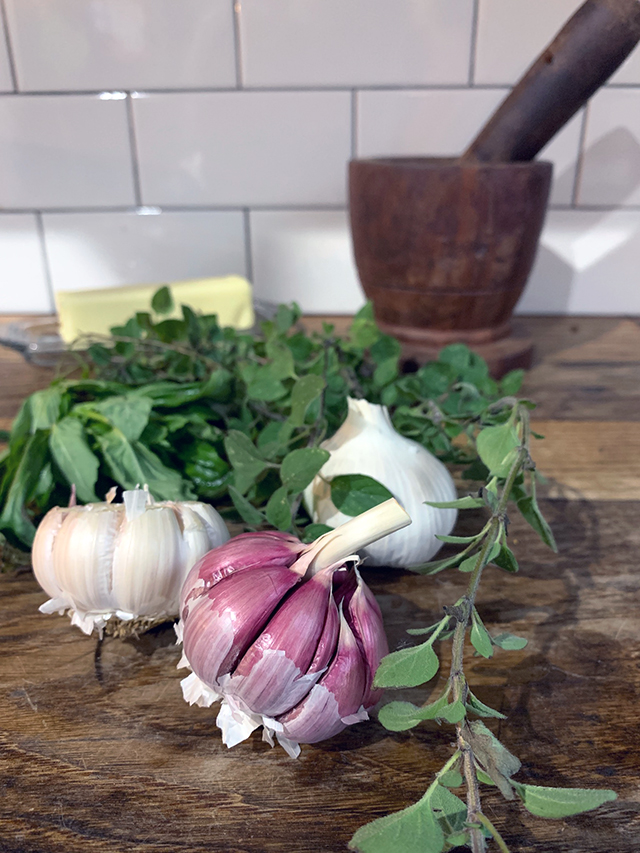
I bring these memories up because the other day at Ciro’s Pastry Shop (415 Beach 129th St), I saw semolina bread and it reminded me of my time at Marzullo’s Bakery. Tony got his bread from his guy in Brooklyn but nonetheless, it was always fresh and delicious. My mother always made me bring a loaf home for dinner.
In Tony’s honor, I wanted to enjoy a loaf of semolina for its taste, in a simple way. I decided to make garlic bread. Fresh herbs and roasted garlic can take bread to another level. And what’s better than bread and butter? I think Tony would approve this recipe, give it a try!
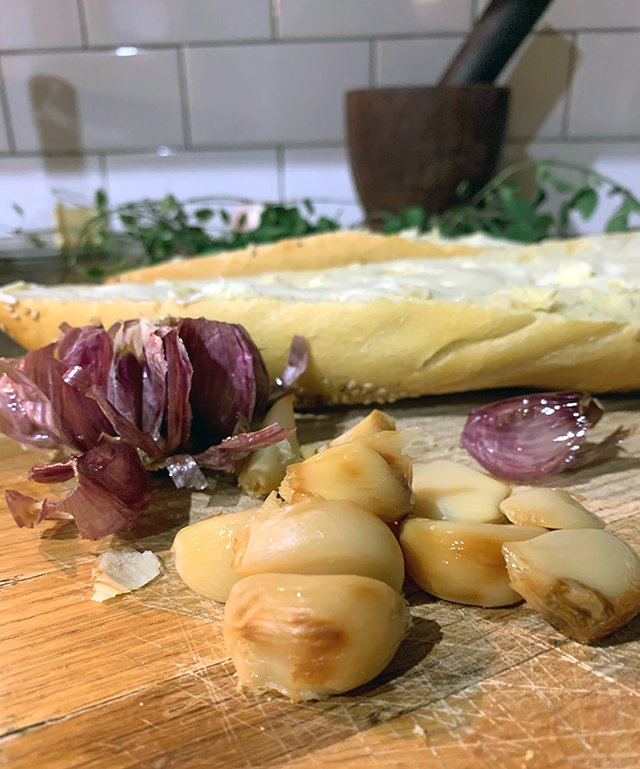
Herb Buttered Garlic Bread
Ingredients:
1 loaf semolina bread
1 stick soften butter
Fresh basil, oregano and chives (or other preferred herbs)
1-2 large garlic bulbs
Salt and fresh ground pepper
Marinara sauce for dipping (optional)
Directions:
-
Preheat the oven to 400 degrees. Peel the papery part off the garlic. Cut 1/4 inches of the tip off the garlic bulb. Rub the bulb with olive oil and enclose it in a piece of tinfoil, cut end up. If you’d like to roast several bulbs at once, use a muffin pan. It works so well! Don’t forget to cover the top with foil. Roast for 35-40 minutes. Let the carmelized garlic cool to the touch. Then gently remove the garlic cloves from the skin.
-
Chop the herbs. Slice the bread and liberally butter both sides of the semolina. Smear the roasted garlic on top of the butter. Add the chopped herbs, salt and pepper.
-
Carefully join the two halves of bread and enclose in tinfoil. Set the oven to 250 degrees and place the bread in for 25 min. Serve with a side of marinara!
